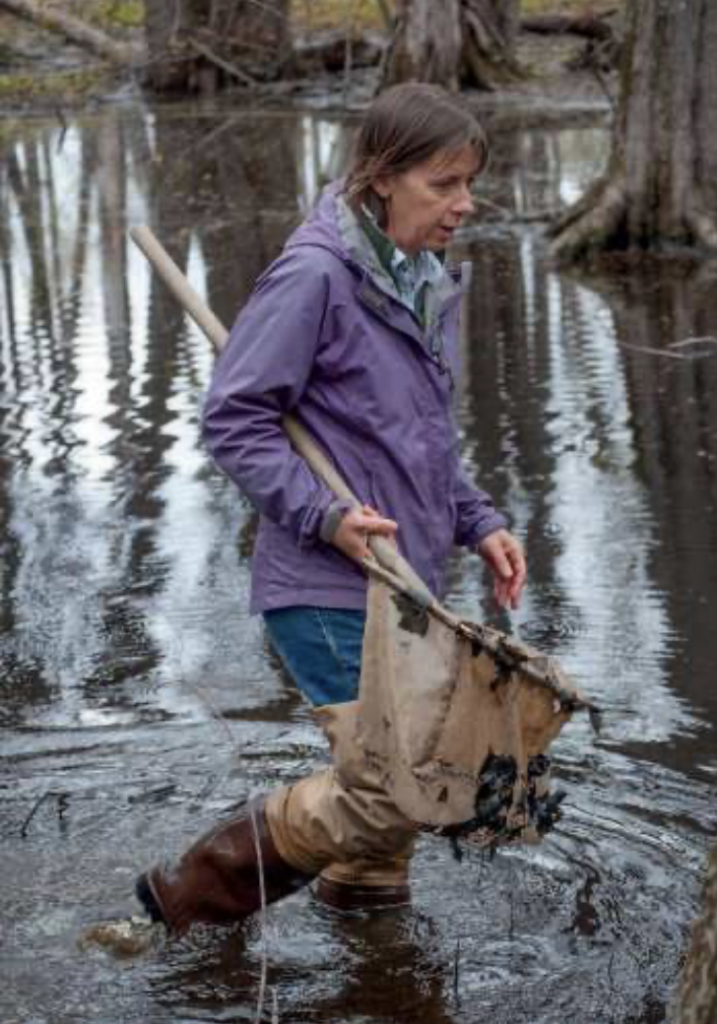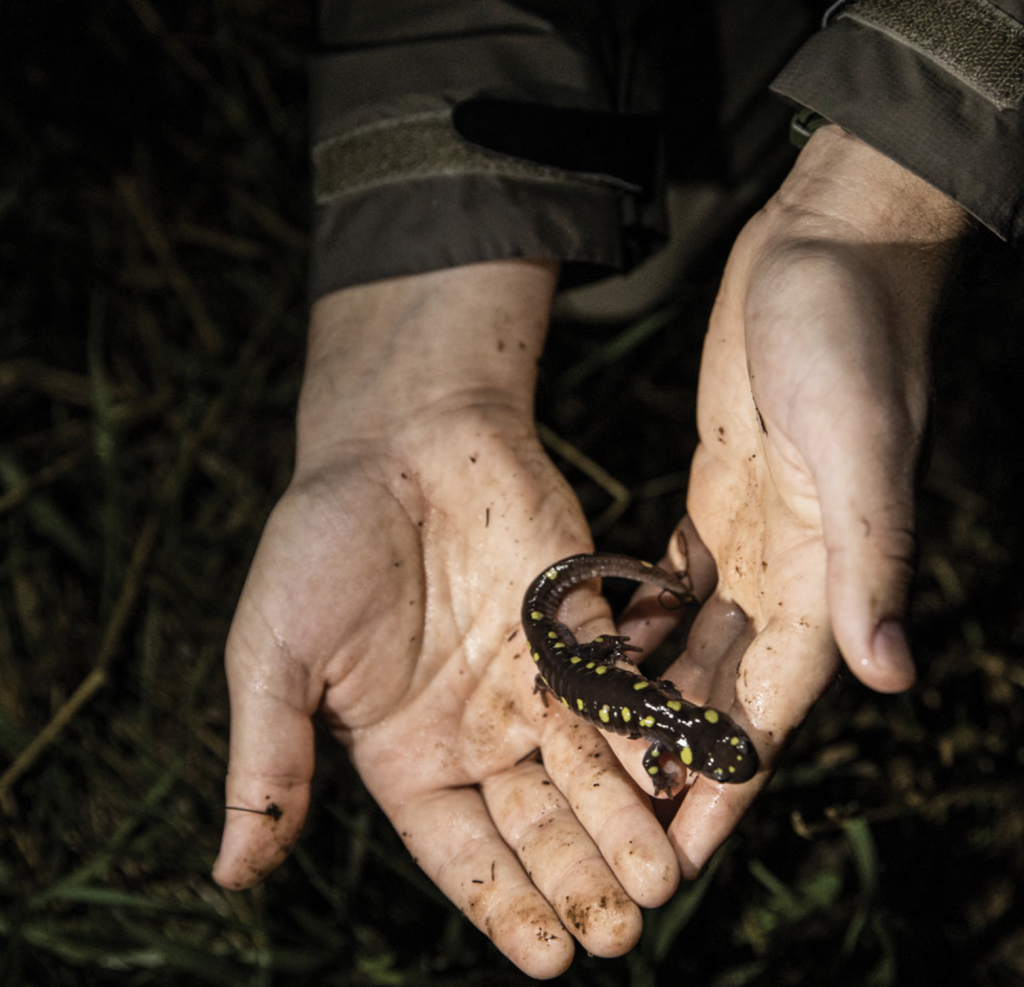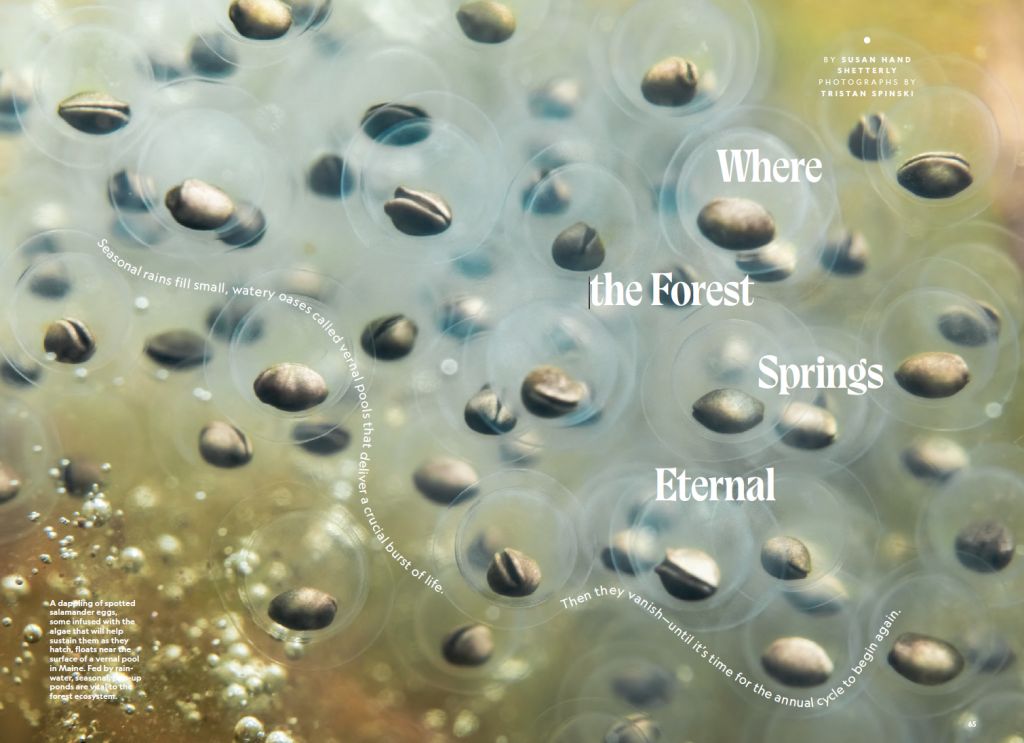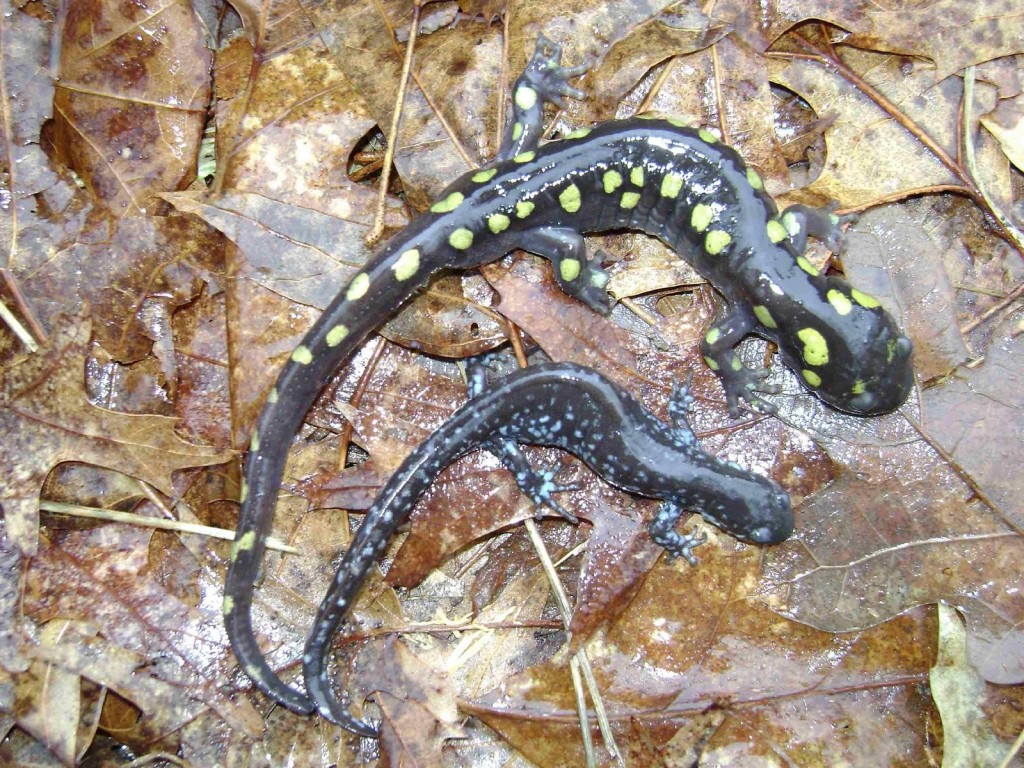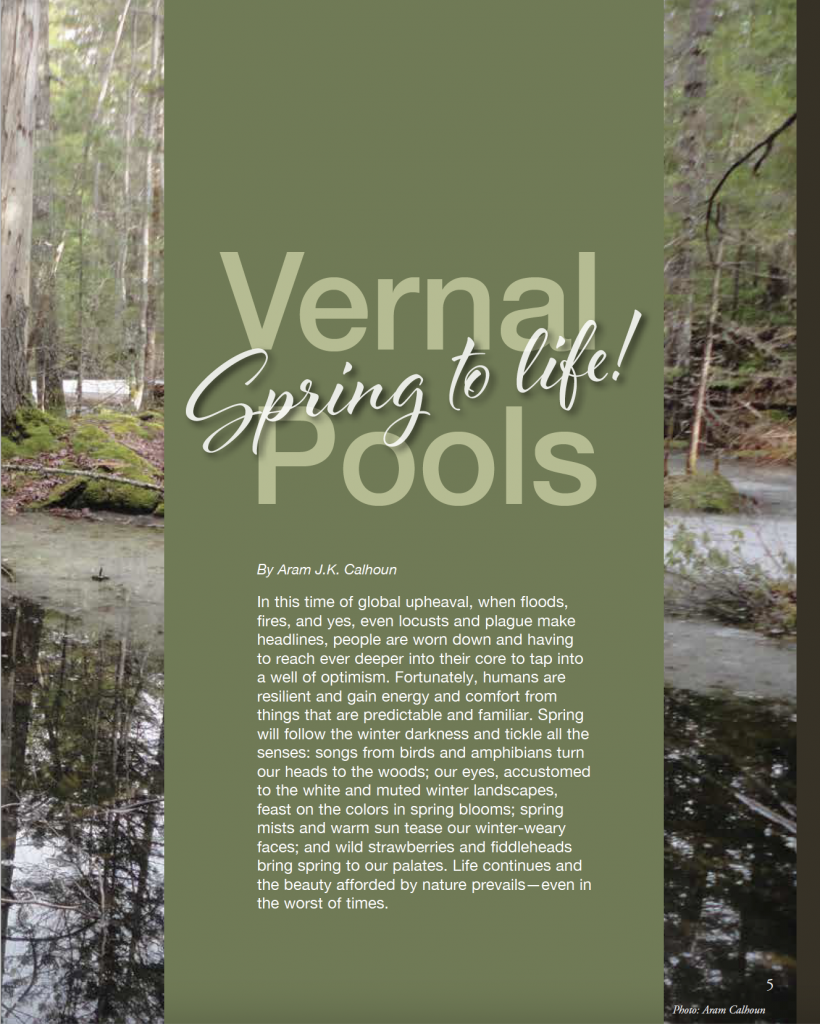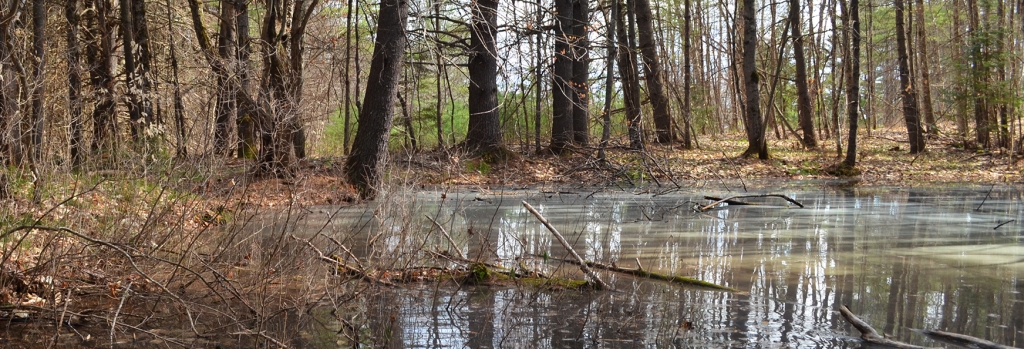
Managing Vernal Pools
“If I was queen for a day, there wouldn’t be separation of terrestrial and wetland conservation,” said University of Maine’s Aram Calhoun, a dogged vernal pool advocate in classrooms and town halls alike. Her decades-long efforts contributed to the recent establishment of two pilot Special Area Management Plans (SAMPs) in Orono and Topsham. Under these plans, the Maine townships manage vernal pools not as isolated habitats but as connected units. The plans additionally emphasize the importance of protecting forests surrounding the pools, where amphibians spend most of their lives but – critically – SAMPs also integrate human needs into the landscape.
*Note: The Samp does not provide money for pools in the Growth Zone; it uses the fees to conserve pools in the rural zone and the funds go to the land trust to work with landowners wanting to conserve their pools, mostly through purchased easements.
Learn More at: https://northernwoodlands.org/knots_and_bolts/managing-vernal-pools
Maine Big Night Volunteers Want You to Make Way For Amphibians
Worldwide, among vertebrates — a group that comprises amphibians, mammals, reptiles, fish, and birds — amphibians are struggling most. Recent studies estimate as many as half of all amphibian species face extinction, as they’re especially sensitive to chemicals, disease, and shifting climate patterns. The situation for the 17 species native to Maine isn’t as bleak, although the Department of Inland Fisheries & Wildlife has labeled the northern leopard frog and LeClair’s personal favorite, the pinkish-orange, cold-water-loving northern spring salamander, species of special concern.
Learn More at: https://www.nationalgeographic.com/premium/article/vernal-pools-forest-life?loggedin=true&rnd=1705431698833
Where the Forest Springs Eternal
Vernal pools depend primarily on rainwater and the runoff from the forest uplands. They have no permanent inlet or outlet. They are small, just a few feet deep, and often strung along the forest floor like reverse archipelagoes. As the season heats and spring rains end, they lose water to evaporation and to the roots of the surrounding trees and bushes. Most pools dry out by late summer. This is an essential quality of a vernal pool. Fish can’t survive a dry-out, which means that the larvae of frogs, salamanders, all sorts of insects, and more, get a better chance to grow up.
View online at National Geographic: https://www.nationalgeographic.com/premium/article/vernal-pools-forest-life?loggedin=true&rnd=1705431698833
Help Us Keep Track Of Creepy-Crawly Critters!
Like creepy-crawly critters? Did you love looking for turtles, snakes, or salamanders as a kid? If so, rekindle that curious kid to help the Maine Department of Inland Fisheries and Wildlife (IFW) search for amphibians and reptiles across Maine this spring, summer, and fall.
This is the last year to collect and submit data on occurrences of these marvelous creatures before the third edition of Maine Amphibians and Reptiles is finalized for publication. The book is based in part on the 13,000 records that have already been submitted to The Maine Amphibian and Reptile Atlas Project (MARAP), which has been ongoing for 36 years, but there are still holes to cover.
Venal Pool – Spring to Life
Spring will follow the winter darkness and tickle all the senses: songs from birds and amphibians turn our heads to the woods; our eyes, accustomed to the white and muted winter landscapes, feast on the colors in spring blooms; spring mists and warm sun tease our winter-weary faces; and wild strawberries and fiddleheads bring spring to our palates. Life continues and the beauty afforded by nature prevails—even in the worst of times.

